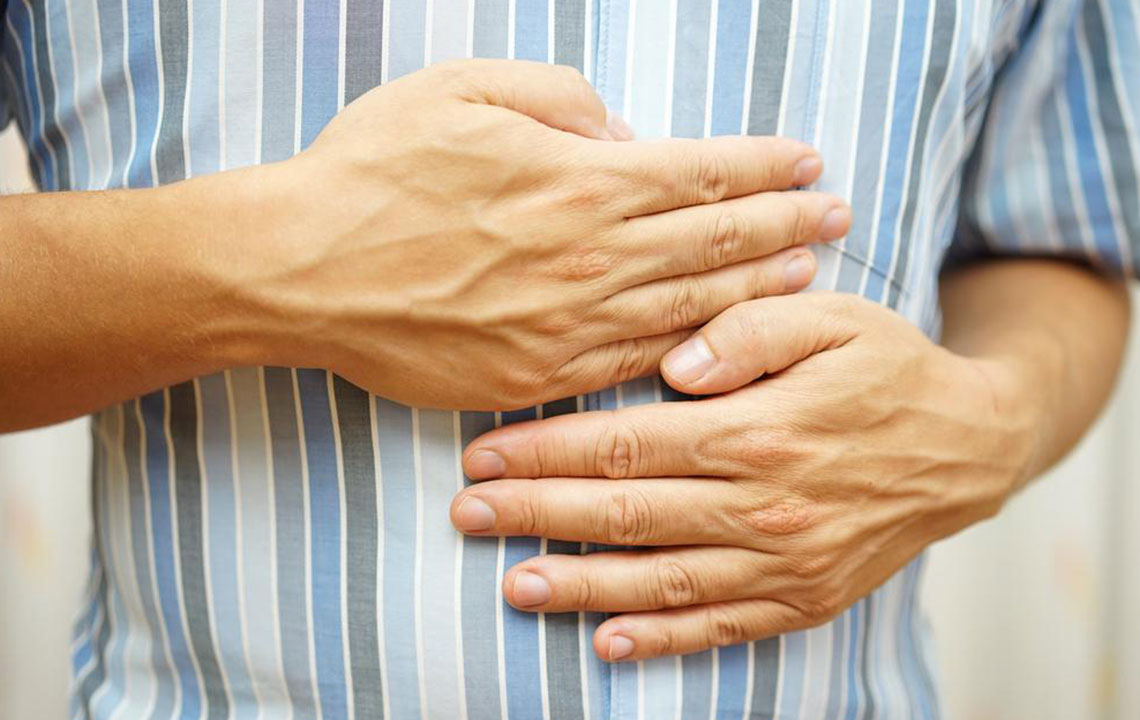Quick facts about Hernia and Hernia Pain Relief

Hernia refers to the medical condition when a fatty tissue or an organ squeezes through a weak spot in the surrounding muscle. All hernias are the result of a combination of a weakness or opening in the muscle or fascia and extreme pressure.
Causes Of Hernia:
- Lifting heavy objects without taking proper care
- Persistent sneezing and/or coughing
- Diarrhea and/or constipation
Hernias differ from one another, depends on the organ or body part affected. Hence, the treatment for hernia pain relief varies. It is difficult for you to diagnose the form of Hernia you’re suffering from. Some of the most common forms of Hernia are:
Types Or Forms of Hernia:
- Inguinal (inner groin) Hernia: The bladder or intestine pushes across the abdominal lining and enters into the groin’s inguinal canal.
- Incisional Hernia: At the site of a previous abdominal surgery, the intestine pushes across the abdominal lining.
- Femoral (outer groin) Hernia: When the intestine protrudes through the canal carrying the femoral artery to the upper thigh.
- Umbilical Hernia: A part of the small intestine squeezes the abdominal lining near the navel.
- Hiatal Hernia: Occurs when the upper portion of the stomach protrudes through an entrance in the diaphragm, called the hiatal.
Methods For Hernia Pain Relief
Hernias are extremely discomforting, if not painful. To ease the pain there are a number of methods that one may use. But it must be understood that all the following methods of hernia pain relief are temporary and one must go for further medical advice:
Usage of ice packs
- When experiencing mild discomfort and uneasiness, it is advisable to apply an ice pack at the site of the hernia for hernia pain relief.
- The ice pack should be applied for 10 to 15 minutes only.
- You can perform this method of hernia pain relief, once or twice a day, but only after approval from the doctor.
- Always ensure that you wrap the ice pack in a towel or thin cloth before applying it to the skin to prevent any damage to the skin tissues. Never apply the ice pack or ice directly to your skin.
- Cold packs tend to reduce the inflammation and swelling and provide temporary relief for hernia pain.
Medications for hernia pain relief
- Moderate hernia pains can be treated by the usage of Over-The-Counter (OTC) medications.
- Pain relievers such as Ibuprofen and Acetaminophen have known to be effective.
- For a hiatal hernia, OTC antacid medications such as Gelusil, Maalox, and Tums may be helpful in providing quick hernia pain relief.
- Prescription medications for hiatal hernia pain relief, such as proton pump inhibitors that reduce acid production can also be used.
- When consuming OTC medications, one must always follow the manufacturer’s instructions
- If it’s been more than a week and you’re still relying on your OTC medication, consult your doctor. A stronger medication for hernia pain relief could be advised by your doctor.
- In Hiatal hernia, one may often have hyperacidity known as reflux. If there is no improvement of your reflux symptoms then one must see the doctor. Reflux can cause severe damage to the esophagus is left untreated. The doctor can prescribe medications to treat the flux and heal the digestive system.
Wearing a support or truss
- When suffering from Inguinal hernia, wearing a special support may act as a hernia pain relief source.
- A truss is much like a supportive underwear, or one may wear a support belt or harness that keeps the hernia in place. Trusses and supports should only be worn for a short period of time and only after consultation with the doctor.
- They don’t heal the hernia, and if worn without proper consultation, they may aggravate the condition.
Acupuncture
- An unconventional method of hernia pain relief, but it has brought about results.
- Acupuncture is a traditional medicine method, which involves inserting slender needles into specific energy points in the body to provide relief.
- Hernia pain relief can be achieved by stimulating the pressure points to reduce the pain.
- This is a delicate procedure and must be carried out only by a certified acupuncturist.
- One must always remember that while acupuncture may act as a hernia pain relief, yet one must seek medical treatment to treat the hernia.
Treatment For Hernia
Hernia can only be treated completely via medical assistance only. The above-mentioned methods of hernia pain relief are temporary, and are enough only till you get the hernia treated with the doctor’s help and surgery.
After all, a hernia refers to the displacement of an organ from its initial position, and thus need expert medical attention to ensure the organ is back in its original position.
Precautions Against Hernia
One cannot prevent the weakness of the muscles that cause a hernia, but one can reduce the strain placed on these muscles, which may help in avoiding future cases or worsening of an existing hernia. These methods include:
- Stop smoking
- Maintaining a healthy body and appropriate weight
- Avoid excessive stress during bowel movements, urination
- Lift heavy objects using the correct posture.


